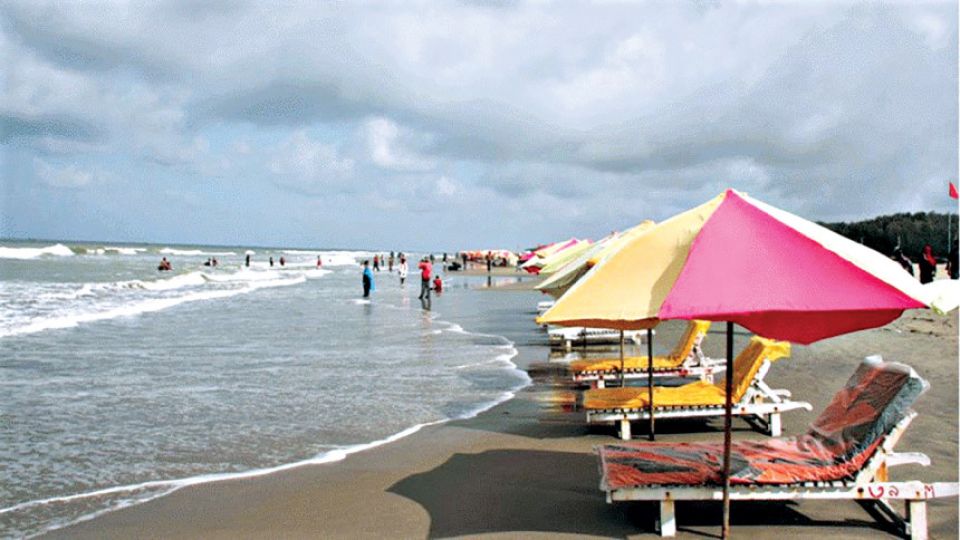September 27, 2022
DHAKA – Permissions from at least 17 different ministries and departments of the government were needed for a cruise ship to be able to travel to Bangladesh from Sri Lanka in 2017.
This was the first and last time any cruise ship visited the country, and it showed how red-tapismafflicts the tourism sector.
The allegation against such bureaucratic tangles was recently raised by Khurshed Alam, secretary of the maritime affairs unit of the foreign ministry.
The state of the country’s tourism sector is further exposed when a foreign or domestic tourist visiting Cox’s Bazar finds out there is not much to do after sundown and they have to stay indoors for the rest of the day.
Different stakeholders in tourism said myriad limitations like this get in the way of tapping the potentials of the sector, and this is why Bangladesh is falling far behind other countries.
They added it is unfortunate that Bangladesh still does not have a masterplan for tourism, even after 51 years of its independence.
Amid such a grim scenario, the country observes World Tourism Day today under the slogan “Rethinking Tourism”.
The government yesterday announced the waiver of all kinds of restrictions, mostly imposed during the Covid-19 pandemic, on foreigners visiting Bangladesh.
Md Rafiuzzaman, chairman of Tour Operators Association of Bangladesh (TOAB), a leading tourism organisation, said the sector has not been able to reap much benefit despite huge prospects.
“The main obstacles are the bureaucratic tangles, inadequate infrastructure facilities, backward communications, and a lack of decent accommodation, safety and security, professionalism and skilled manpower.”
Santos Kumar Dev, chairman of the department of tourism and hospitality management in Dhaka University, said Bangladesh has bountiful resources to offer to both local and foreign travellers with its scenic beauty, ethnic diversity, unique cuisines, rich heritage and historical sites, profound religious sentiments and much more.
Toufiq Rahman, secretary general of the Bangladesh chapter of Pacific Asia Travel Association, said cities and towns lack an adequate number of quality accommodation, decent public transport and safe roads.
Besides, he said the tourism infrastructure is not as developed as it should be.
The country is yet to offer quality resorts and hotels with proper recreational facilities that would attract tourists. They also lack well-trained personnel to guide the tourists, and different means of entertainment at the tourist spots.
Moreover, he said the lack of community support is a major barrier for the sector’s development.
Travel agents, tour operators or guides; Hajj and Umrah agencies; hoteliers, restaurant owners, resort and amusement park owners; and aviation and transportation owners are among the stakeholders in the tourism and hospitality sector.
According to TOAB, around 40 lakh people are employed in the industry.
At present, the sector accounts for 3.5-4 percent of the GDP.
Experts say this contribution can be easily raised to five to six percent through coordinated courses of action.
Toufiq Rahman further said the tourism sector will not flourish unless foreigners are drawn in droves.
During the pre-Covid time, only around three lakh foreigners would visit the country every year, most of whom were business tourists.
“Only 10-15,000 foreign tourists come to Bangladesh for leisure purposes. We will have to take up more measures to attract foreign tourists for the betterment of the sector.”
He added that according to government statistics, there are around 1,600 tourist spots in the country. “But how many of us are aware of those spots?
“This is because the government does not have proper planning to promote and brand those destinations at home or abroad.”
Santos Kumar said, “We don’t have any promotional activities and social media marketing in this regard, which other countries have.”
Afisa Jannat Saleh, the first female vice president of TOAB, said the unsafe environment for women is another major obstacle.
“Women do not feel secure to travel [in our country] alone for tourism purposes.”
The first national tourism policy, formulated in 1992, said all modern entertainment facilities would be created for foreign tourists and a masterplan would focus on Cox’s Bazar and the Sundarbans.
However, in reality, none of that ever happened.


